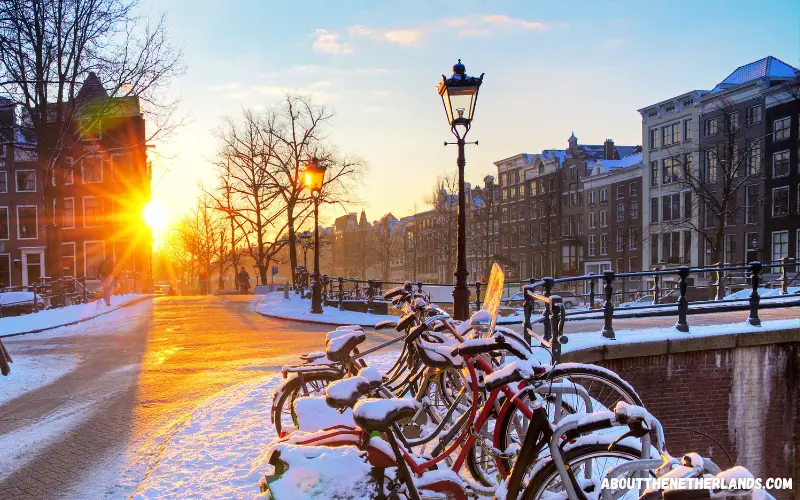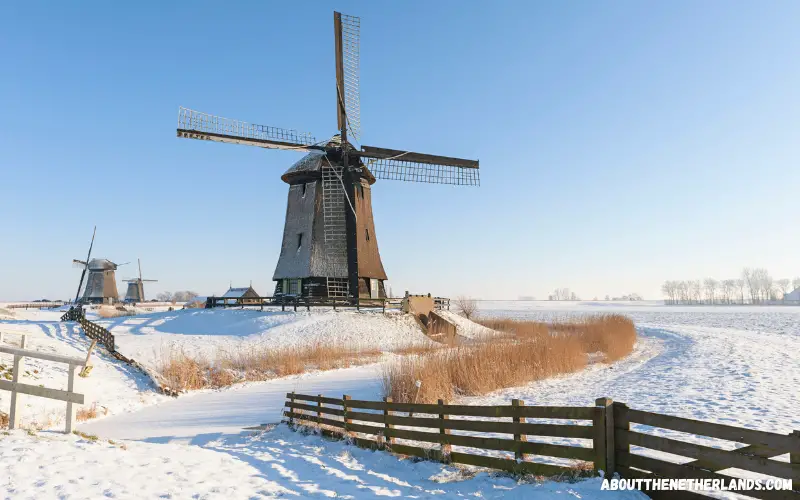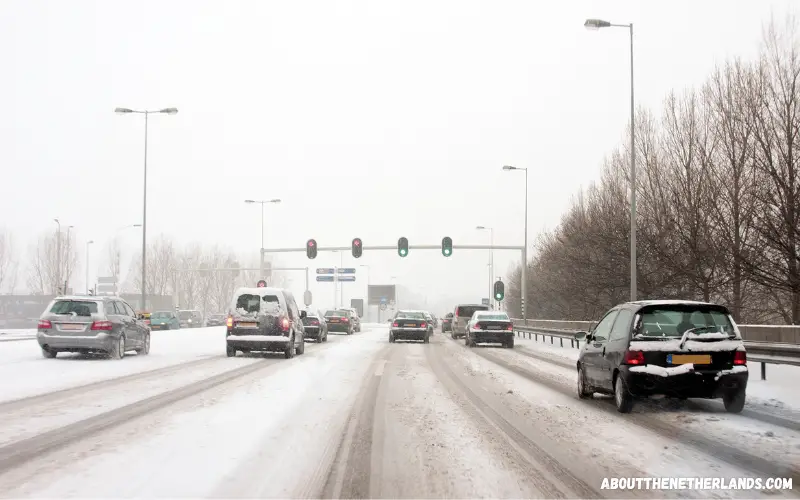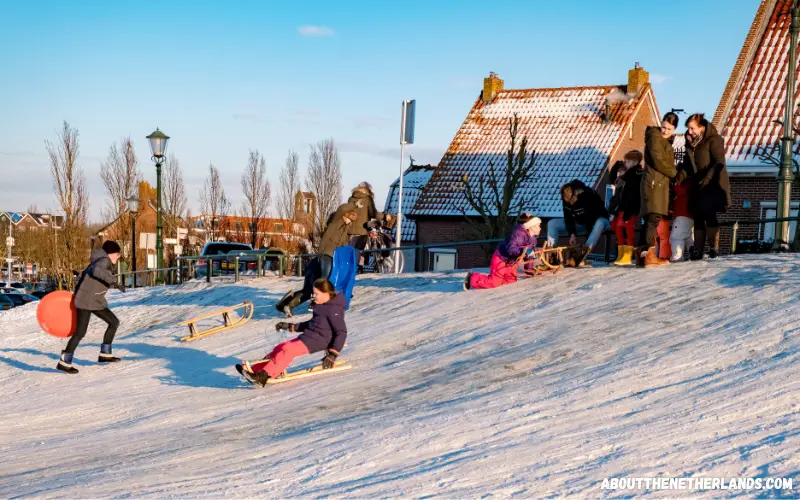

Imagine walking down the charming streets of Amsterdam, sipping on a warm cup of hot chocolate, and watching as the picturesque canals slowly turn into a winter wonderland. But does it snow in the Netherlands?
As you plan your trip to this beautiful and diverse country, you might be curious about the likelihood of witnessing snow-covered landscapes, frosty mornings, and the enchanting atmosphere that winter brings.
Well, the answer is yes, it does snow in the Netherlands, but the frequency and amount of snowfall can vary greatly depending on the year and location within the country.
The winter season in the Netherlands typically lasts from December to February, and while significant snowfall might not be a common occurrence in every region, certain areas do experience their fair share of snow.
It's during these months that the Netherlands transforms into a beautiful winter wonderland, making it an ideal time for visitors to embrace the festive spirit and explore the snow-covered beauty.

The Netherlands experiences a temperate maritime climate characterized by cool summers and mild winters.
Snowfall is rare, but it can happen, especially during the months of December, January, and February. On average, the country experiences a few snowfall events every year, although the amount of snowfall can fluctuate annually.
Several factors influence the climate and snowfall in the Netherlands, including its proximity to the North Sea and the expansion of the Azores High. During April, snow showers can still occur, and in early May, the maximum temperature can hover around 10°C (50°F) to 15°C (60°F).
However, starting from May, the expansion of the Azores High can bring the first sunny and relatively warm days, with the second half of the month being particularly favorable for such weather.
Temperatures across the Netherlands differ from one region to another. As you move towards the north and southeast of the country, the temperatures during winter tend to get colder, making it more likely for snowfall to occur in these areas.
In general, snow is more likely to fall during the winter months of December, January, and February.
Snow in the Netherlands is not a frequent occurrence, but it does happen, especially during the winter months of December, January, and February. The amount of snowfall can vary from year to year, with the country experiencing a few snowfall events each year.
While the average snowfall across the Netherlands is about 30 inches annually, some regions receive slightly more snow than others. However, it is important to note that the differences between regions are relatively noticeable. Regardless of the region, snowfall remains an infrequent event.
Over the years, snowfall in the Netherlands has become more exceptional. The winter period, between December and February, has the highest chance of snowfall, with an average of 20 days of snow per year. Yet, this does not guarantee a white winter wonderland every year.
Snow in the Netherlands can affect transportation to varying degrees. Although snowfall is not a regular occurrence, when it does happen, it can lead to disruptions in both road and rail travel.
Slippery roads can cause accidents and delays, while snow on the train tracks may lead to train cancellations or slower speeds for safety reasons.

The country does have a winter maintenance program in place to help minimize the impact of snow on transportation, but it's important for travelers to be prepared for potential delays during snowy conditions.
In times of snow, public services may also be affected. Schools, government offices, and other institutions might experience closures or operate on a reduced schedule due to adverse weather conditions.
Snowfall can put additional strain on emergency services, as they may need to attend to more incidents like traffic accidents or people requiring assistance with snow-related issues.
Furthermore, snow can create challenges for waste collection and other municipal services, leading to potential disruptions.
Despite the potential disruptions, snow brings with it various recreational opportunities in the Netherlands. Some people enjoy taking part in winter sports, such as ice skating on natural ice or playing in the snow.

Parks and nature reserves can be particularly picturesque during snowy periods, offering a unique opportunity for photography enthusiasts to capture the beauty of the Dutch landscape in winter. Additionally, many cultural events and festivals take place during the winter months, providing entertainment for both locals and tourists alike.
Climate change has a significant impact on weather patterns around the world, including snowfall in the Netherlands. Although the country has experienced an increase in average temperatures, it is still possible to experience snowy winters.
According to the Dutch government website, temperatures in the Netherlands have risen by 1.7 degrees Celsius since 1900, which is twice as fast as the global average.
As a result of climate change, the nature of snow events in the Netherlands is likely to change. Warmer air can hold more moisture, potentially leading to heavier snowfalls when temperatures are below freezing (BBC Future).
However, as The Conversation notes, snowfall will only increase during periods when the temperature remains below freezing.
In some cases, climate change may lead to stronger polar vortex disruptions, causing extreme winter conditions. For instance, a weather forecaster from Weer.nl predicted a "horror winter" for the Netherlands in 2022. From my own experience, I can tell you that this prediction did not come true.
However, these events may become more frequent, creating unpredictable and challenging winter conditions.
In response to these changes, it is essential for the Netherlands to implement adaptation strategies to mitigate the impacts of climate change on snowfall and winter weather.
Some potential strategies include:
By proactively adapting to these changes, the Netherlands can continue to manage snowfall events and thrive in a changing climate.
In summary, snowfall in the Netherlands is not guaranteed, with the country experiencing a temperate maritime climate and milder winter conditions compared to some neighboring countries like Germany and Belgium.
Snow can be expected during the Dutch winter season, which lasts from December to February, but significant flurries are relatively uncommon.
When looking for the best chance to experience snow in the Netherlands, it is advisable to visit the north and southeast parts of the country, as these regions tend to have colder temperatures during winter and are more likely to see snowfall.
On average, the country sees snow on 20 days per year, with the eastern provinces in the Netherlands experiencing the most snowfall.
However, it's important to note that snow in the Netherlands is becoming more exceptional due to climate change. The Dutch Weather Institute (KNMI) predicts that by 2100, the country might only have one snow day per year.
As temperatures continue to rise, snow will become an increasingly rarer weather phenomenon in the Netherlands.